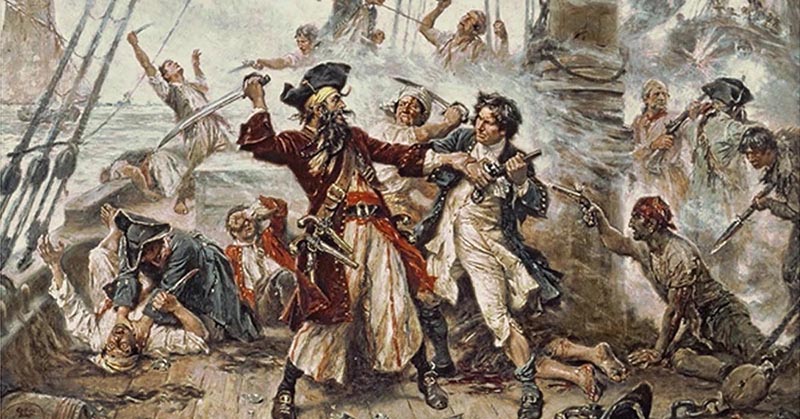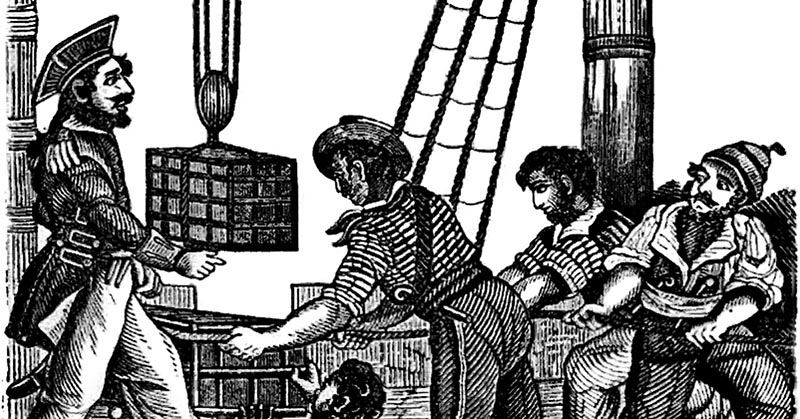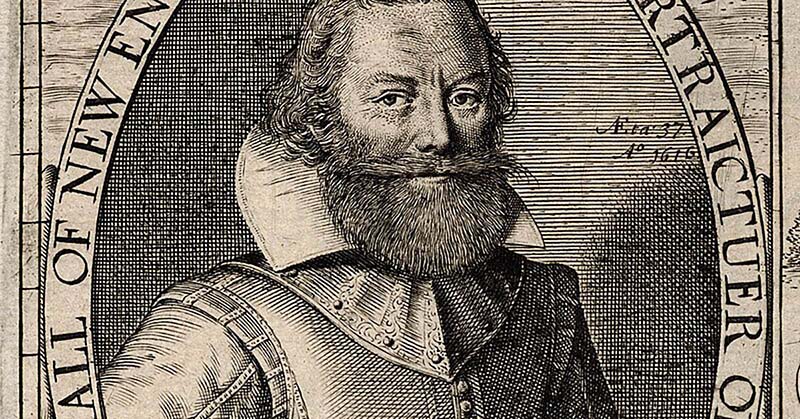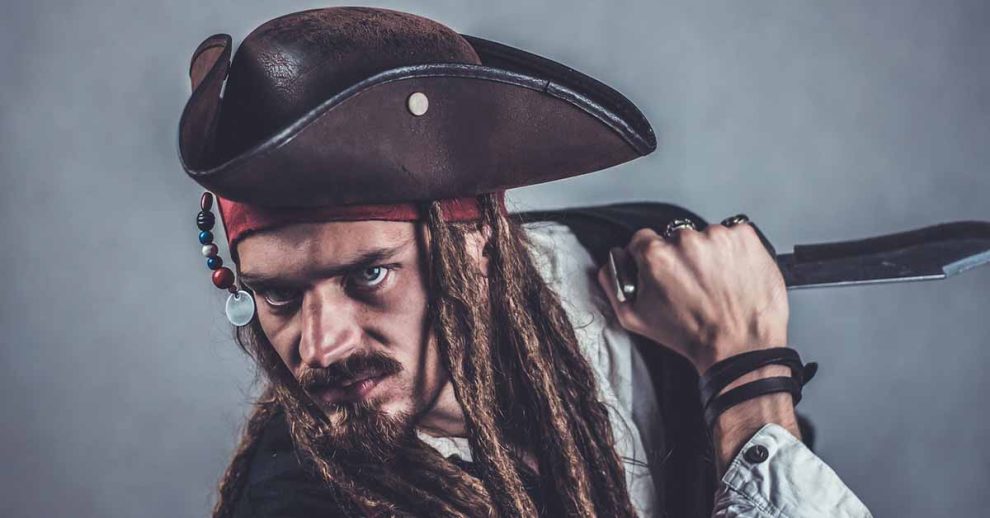Pirates have prowled the world’s seas for thousands of years, long before the Caribbean’s infamous Golden Age made them legends of lore. From the time of the ancient Phoenicians to the Indian Ocean corsairs and Southeast Asian sea raiders, piracy has been a recurring fixture in maritime history. Unlike the romanticized portrayals popularized in novels and Hollywood films, real pirates were not only outlaws but also opportunists shaped by economic forces, shifting empires, and maritime trade routes. Many were former sailors, privateers, or naval deserters who turned to piracy after being mistreated or underpaid—seeing more fortune and freedom in rebellion than loyalty.
The rise and fall of pirate havens like Madagascar’s Île Sainte-Marie and the Bahamas’ New Providence reveal how piracy wasn’t just individual rogue behavior—it was often deeply entwined with global politics. Some colonial governors secretly profited from pirates, while others waged brutal campaigns against them under pressure from European powers. Pirate societies, meanwhile, operated with surprising sophistication: crews elected their captains, divided loot according to pre-agreed shares, and followed codes of conduct that rivaled naval regulations. Though piracy is now largely associated with the past, modern pirates still threaten shipping lanes today, particularly in parts of West Africa and Southeast Asia—reminders that piracy is less a relic of the past than a symptom of ongoing maritime inequality and opportunity. Here are some of the most surprising and little-known facts about pirates that reveal the strange, bold, and often unbelievable realities behind the legends.

1. Pirates were considered “hostis humani generis,” meaning “the enemy of all mankind.” It was the universal right and duty of all nations to capture pirates they encountered and execute them if found guilty. Even today, piracy remains a special crime under universal jurisdiction, reflecting its enduring threat to global security.
2. Pirates used the black Jolly Roger flag to signal their intent and offered victims the option to surrender. In contrast, the red Jolly Roger indicated that no mercy would be shown, and the pirates intended to take the ship with force. This strategic use of flags played a crucial role in pirate tactics during their raids.
3. In 1793, pirates hijacked the ship carrying the standardized meter and kilogram to the USA, preventing United States from adopting the metric system. As a result, the measurements never reached American shores, delaying the country’s transition to the metric system.
4. Pirate Benjamin Hornigold once raided a merchant ship solely to steal hats from its crew. The night before, his crew had become too drunk and had thrown their own hats overboard.
5. When the famous pirate Henry Morgan died, authorities declared an amnesty allowing pirates and privateers to pay their respects without fear of arrest. He received a state funeral in Port Royal, complete with a 22-gun salute.
6. When Blackbeard captured the ship that became Queen Anne’s Revenge, there were 455 African slaves on board. Many of these slaves chose to become pirates rather than remain enslaved. By the time of Blackbeard’s death, nearly one-third of his crew consisted of former slaves.
7. When pirate Jean Lafitte learned of a $500 bounty placed on his head by the Governor of Louisiana, he retaliated by placing a $5,000 bounty on the governor’s head.
8. Ching Shih, a former Chinese prostitute, became the most successful pirate of all time. She commanded over 1,800 ships and up to 200,000 pirates, making her a formidable force at sea. Remarkably, she retired peacefully, one of the few pirates to do so.
9. Jeanne De Clisson, a 14th-century Pirate Queen, sought revenge on the French king for executing her husband. She sold her estates, raised an army, and mercilessly raided French ships. Her three ships, painted black with red sails, became a symbol of her relentless pursuit of vengeance.
10. French pirate Olivier Levasseur allegedly tossed a necklace containing a puzzle leading to his treasure into a crowd moments before his execution. He challenged the crowd to find it if they could. This enigmatic gesture has fueled treasure hunts and speculation for generations.

11. In the late 17th century, pirate Henry Avery became the richest pirate in the world after raiding a treasure-laden ship belonging to the Grand Ruler of India. He stole £600,000 in precious metals and jewels, equivalent to £89.6 million today. Consequently, authorities launched the world’s first worldwide manhunt to capture him.
12. Pirates and sailors wore earrings at sea to cover funeral expenses in the event of their deaths. This tradition served as a form of insurance, ensuring they received a proper burial.
13. Pirates often stocked a variety of flags and typically flew false ones to deceive other ships. They only raised the Jolly Roger when their prey vessels were within firing range, ensuring an element of surprise. This tactic was crucial for successful raids, as it minimized resistance from targeted ships.
14. Contrary to his modern-day image as a ruthless tyrant, infamous pirate Blackbeard actually avoided violence, preferring intimidation tactics. He never harmed or murdered anyone he held captive and was only active from 1716 to 1718. Surprisingly, Blackbeard was in his 30s during his notorious pirate career.
15. Pirate ‘Black Bart’ Roberts believed Irish people were among the worst crew members due to their perceived mutinous tendencies. Consequently, many individuals Bart attempted to force into piracy would fake an Irish accent to avoid joining. Bart also enforced strict rules, such as prohibiting lights and drinking after 8 p.m., and banning gambling, while providing pensions for injured crew members.
16. During the Golden Age of Piracy, some women became pirates by disguising themselves as men to enjoy the freedoms and rights only men had. Anne Bonny and Mary Read were two famous female pirates who fell in love with each other’s disguised appearances. Their true identities were only revealed when Bonny confessed her attraction to Read, prompting Read to disclose her own gender.
17. Pirates and buccaneers sometimes engaged in “matelotage,” a practice where male couples agreed to share their incomes and inherit each other’s property upon death.
18. Hayreddin “Redbeard” Barbarossa (1478-1546) was exiled from so many countries that he eventually established his own nation, the Regency of Algiers, with the Ottoman Empire’s blessing. This territory evolved into present-day Algeria, Tunisia, and parts of Morocco.
19. When “The Pirate Queen” Grace O’Malley’s sons were captured by the English, she convinced Queen Elizabeth to free them and allow her to continue her piratical activities. In return, O’Malley agreed to defend the Crown.
20. Pirates rarely plundered gold, silver, and jewels; instead, they most commonly seized trade goods. Items such as bolts of cloth, tanned animal skins, spices, sugar, dyes, cocoa, tobacco, cotton, and wood were typical targets. These goods were more practical and easier to trade, making them valuable commodities for pirate crews.

21. John Smith, a notorious pirate, beheaded three Turks in jousting matches while fighting for the Holy Roman Empire. Captured and enslaved in Russia, he eventually escaped by killing his master. Only after these adventurous exploits did he set sail for what is now Virginia, United States.
22. In the pre-classical era, ancient Greeks considered piracy a legitimate profession. This practice was widespread and regarded as an entirely honorable way to earn a living. Many texts, including Homer’s Iliad and Odyssey, reference its normalcy.
23. The Golden Age of Piracy, spanning from the 1650s to the 1730s, emerged due to several factors. More valuable cargo was shipped over vast ocean areas, European navies were reduced, and corrupt officials in overseas colonies turned a blind eye. These conditions created a perfect storm for piracy to thrive.
24. The modern “pirate accent” originates from Robert Newton’s portrayal of Long John Silver in the 1950 Disney adaptation of Treasure Island. Before Newton’s performance, there was no universal “pirate accent.” His distinctive West Country accent became the standard for pirate speech in popular culture.
25. In 1575, Barbary Pirates captured Miguel de Cervantes, the author of Don Quixote, and his brother Rodrigo. After two years, their family could only afford to ransom Rodrigo, leaving Cervantes in captivity. A religious charity eventually paid for his release three years later, allowing him to return to Spain.
Sources: 1, 2, 3, 4, 5, 6, 7, 8, 9, 10, 11, 12, 13, 14, 15, 16, 17, 18, 19, 20, 21, 22, 23, 24, 25




Add Comment